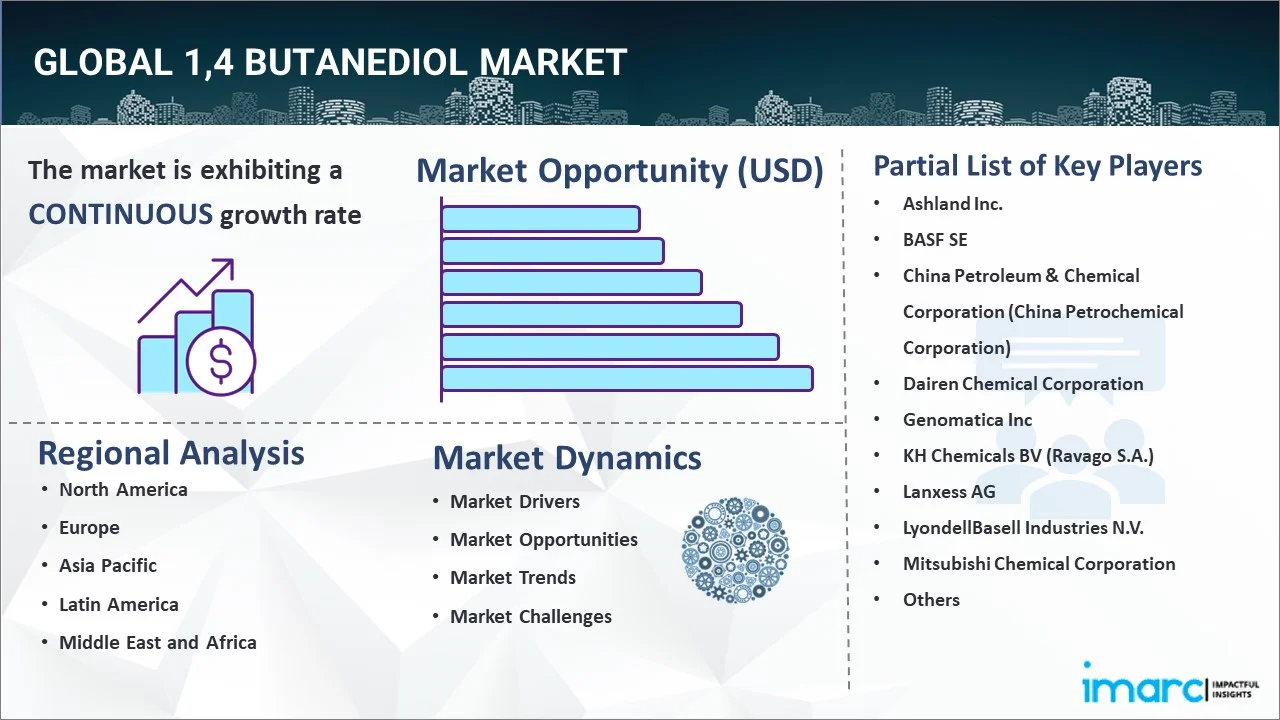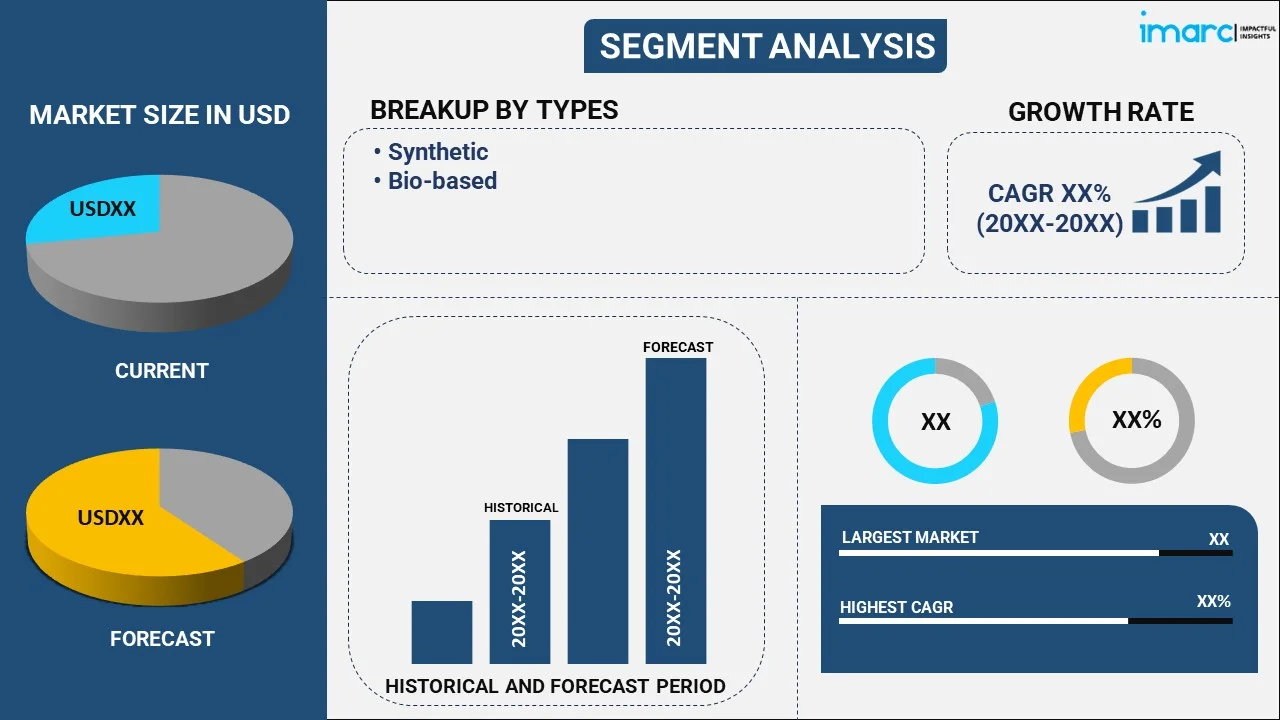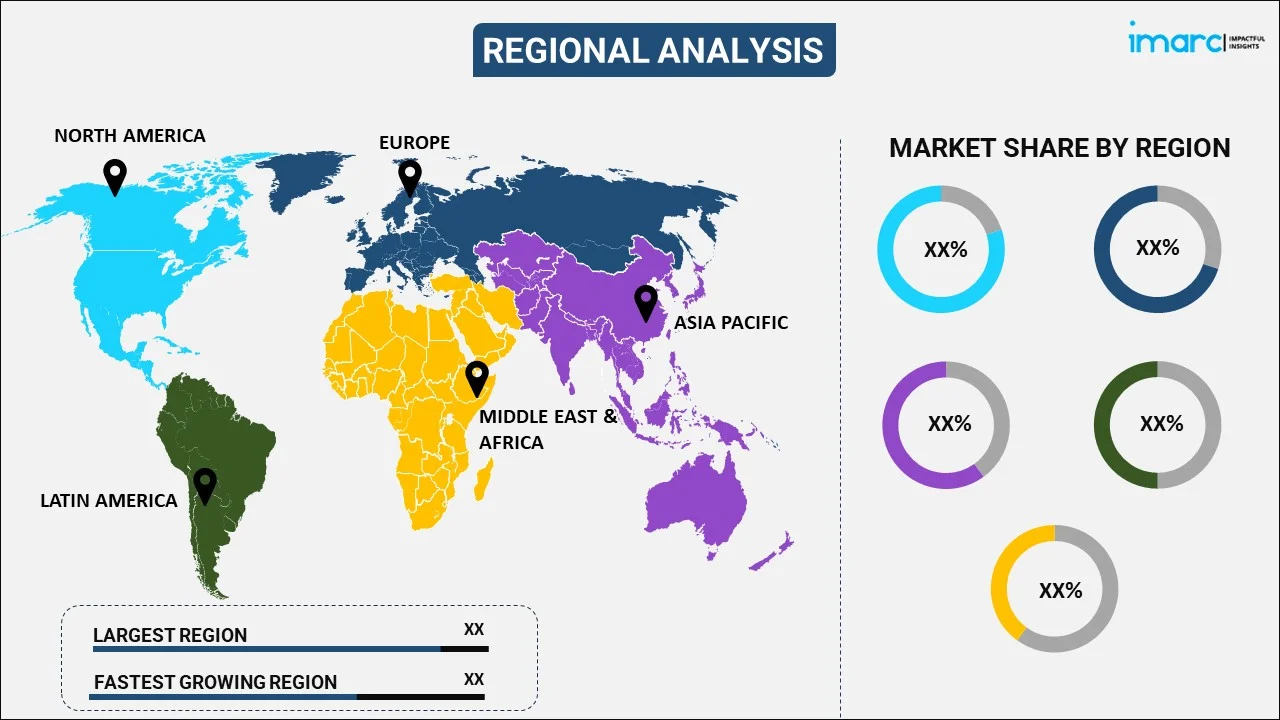
1,4 Butanediol Market Report by Type (Synthetic, Bio-based), Derivative (Tetrahydrofuran (THF), Polybutylene Terephthalate (PBT), Gamma-Butyrolactone (GBL), Polyurethane (PU), and Others), End Use Industry (Textile, Automotive, Healthcare and Pharmaceutical, Electrical and Electronics, and Others), and Region 2025-2033
1,4 Butanediol Market Size:
The global 1,4 butanediol market size reached USD 8.1 Billion in 2024. Looking forward, IMARC Group expects the market to reach USD 13.2 Billion by 2033, exhibiting a growth rate (CAGR) of 5.29% during 2025-2033. The market is experiencing stable expansion due to its amplifying demand in producing solvents, plastics, and fibers. Moreover, its expanding applications in sectors like pharmaceuticals, automotive, and textiles significantly bolster market growth, supported by continuous technological innovations and magnifying industrialization across major industries.
|
Report Attribute
|
Key Statistics
|
|---|---|
|
Base Year
|
2024
|
|
Forecast Years
|
2025-2033
|
|
Historical Years
|
2019-2024
|
|
Market Size in 2024
|
USD 8.1 Billion |
|
Market Forecast in 2033
|
USD 13.2 Billion |
| Market Growth Rate 2025-2033 | 5.29% |
1,4 butanediol (C4H10O2) is a colorless, oily, and viscous liquid with high solubility in water and other chemicals. It is a primary alcohol and an organic compound produced from petroleum-based substrates such as acetylene, butane, propylene, and butadiene. It is widely used in industrial settings as a solvent and in the manufacturing of some types of plastics, elastic fibers, and polyurethanes. 1,4 butanediol is also used as a raw material in both the organic and fine chemical industries for its excellent environmental characteristics and minimal health risks to workers. As a result, it finds extensive applications across the textile, automotive, chemical, electrical and electronics, papermaking, healthcare, and pharmaceutical industries.

1,4 Butanediol Market Trends:
Growing Demand from Electronics and Automotive Sectors
The global 1,4 butanediol (BDO) market is witnessing growth principally driven by its increasing utilization in the electronics and automotive sectors. 1,4 butanediol is an integral component in the manufacturing of polybutylene terephthalate (PBT) resins, which are extensively leveraged in these industries to produce durable plastic components, like housings or connectors. For instance, in May 2024, Yazaki Corporation and Toray Industries collaborated to produce a new recycled PBT resin particualrly for manufacturing connectors for automotive wire harnesses. Moreover, the heightening adoption of lightweight materials in electronic products and vehicles to lower weight and enhance efficacy has further bolstered the need for 1,4 butanediol. In addition, as the electronics and automotive industries continue to grow rapidly, the demand for superior-performance materials like 1,4 butanediol is anticipated to propel, boosting the market expansion.
Increasing Applications in Personal Care and Pharmaceuticals
The 1,4 butanediol market analysis indicates that the expanding applications in the personal care and pharmaceutical industries is notably driving the demand. 1,4 butanediol plays a crucial role as a key raw material in the production of tetrahydrofuran (THF), which is generally utilized in manufacturing spandex fibers generally found in personal care products as well as medical textiles. For instance, in May 2024, The LYCRA Company collaborated with Dairen Chemical Corporation (DCC) to produce low-impact PTMEG, a key ingredient for bio-based LYCRA fiber or spandex fiber, from 1, 4 butanediol. In addition, 1,4 butanediol is extensively leveraged in the development of excipients and solvents for a broad range of pharmaceutical formulations. Moreover, as customer need for enhanced pharmaceuticals and personal care products escalates, the demand for versatile chemicals is anticipated to further boost market growth in these sectors, consequently broadening the 1,4 butanediol market scope. As per industry reports, by 2026, personal care market is projected to grow by 4.5% in India.
Inclination Toward Sustainable Production Techniques
The magnifying inclination towards sustainability is significantly impacting the 1,4 butanediol market as manufacturers are currently seeking bio-based production techniques. Bio-based 1,4 butanediol, typically derived from renewable feedstocks, is rapidly gaining momentum due to its lower environmental impact in comparison to conventional petrochemical-based production methods. Moreover, this inclination aligns with the increasing global environmental regulatory policies and customer demand for environmentally friendly products. In addition, several companies are actively investing in green production methods and technologies to address the rising requirement for sustainable materials. Consequently, the adoption of this product is expected to accelerate, as indicated by the 1,4 butanediol market research, offering new growth avenues in the market while addressing the demand for environmentally safe manufacturing solutions. According to a research article published in the journal Green Chemistry in January 2023, an eco-friendly method for the production of bio-based 1,4-butanediol from succinic acid was successfully developed. This method exhibited exceptional prolonged stability of 1,4-butanediol without hampering its functional activity, attaining a 91.2% yield rate.
1,4 Butanediol Market Segmentation:
IMARC Group provides an analysis of the key trends in each segment of the market, along with forecasts at the global, regional, and country levels for 2025-2033. Our report has categorized the market based on type, derivative and end use industry.
Breakup by Type:

- Synthetic
- Bio-based
Breakup by Derivative:
- Tetrahydrofuran (THF)
- Polybutylene Terephthalate (PBT)
- Gamma-Butyrolactone (GBL)
- Polyurethane (PU)
- Others
Breakup by End Use Industry:
- Textile
- Automotive
- Healthcare and Pharmaceutical
- Electrical and Electronics
- Others
Breakup by Region:

- North America
- United States
- Canada
- Asia-Pacific
- China
- Japan
- India
- South Korea
- Australia
- Indonesia
- Others
- Europe
- Germany
- France
- United Kingdom
- Italy
- Spain
- Russia
- Others
- Latin America
- Brazil
- Mexico
- Others
- Middle East and Africa
Competitive Landscape:
The report has also provided a comprehensive analysis of the competitive landscape in the global 1,4 butanediol market. Detailed profiles of all major companies have also been provided. Some of the companies covered include:
- Ashland Inc.
- BASF SE
- China Petroleum & Chemical Corporation (China Petrochemical Corporation)
- Dairen Chemical Corporation
- Genomatica Inc
- KH Chemicals BV (Ravago S.A.)
- Lanxess AG
- LyondellBasell Industries N.V.
- Mitsubishi Chemical Corporation
- Nan Ya Plastics Corporation
- Shanxi Sanwei Group Co. Ltd.
- Sipchem Company
- Xinjiang Blue Ridge Tunhe Sci.&Tech. Co. Ltd.
Kindly note that this only represents a partial list of companies, and the complete list has been provided in the report.
1,4 Butanediol Market News:
- In September 2023, BASF signed an agreement with Qore LLC to successfully secure the long-term access to QIRA's bio-based 1,4-butanediol. This strategic move supports BASF's expansion of its bio-based derivatives portfolio, including tetrahydrofuran and polytetrahydrofuran, with commercial quantities expected by Q1 2025.
- In April 2024, Hyosung, a prominent spandex fibers producer, announced plans to invest D1 billion in a Vietnam facility that will leverage fermentation technology to produce 1,4-butanediol a key precursor for spandex, from sugar. The plant targets to generate 50,000 metric tons annually by 2026, elevating to 200,000 tons by the year 2035.
1,4 Butanediol Market Report Scope:
| Report Features | Details |
|---|---|
| Base Year of the Analysis | 2024 |
| Historical Period | 2019-2024 |
| Forecast Period | 2025-2033 |
| Units | Billion USD |
| Scope of the Report | Exploration of Historical Trends and Market Outlook, Industry Catalysts and Challenges, Segment-Wise Historical and Future Market Assessment:
|
| Types Covered | Synthetic, Bio-based |
| Derivatives Covered | Tetrahydrofuran (THF), Polybutylene Terephthalate (PBT), Gamma-Butyrolactone (GBL), Polyurethane (PU), Others |
| End Use Industries Covered | Textile, Automotive, Healthcare and Pharmaceutical, Electrical and Electronics, Others |
| Regions Covered | Asia Pacific, Europe, North America, Latin America, Middle East and Africa |
| Countries Covered | United States, Canada, Germany, France, United Kingdom, Italy, Spain, Russia, China, Japan, India, South Korea, Australia, Indonesia, Brazil, Mexico |
| Companies Covered | Ashland Inc., BASF SE, China Petroleum & Chemical Corporation (China Petrochemical Corporation), Dairen Chemical Corporation, Genomatica Inc, KH Chemicals BV (Ravago S.A.), Lanxess AG, LyondellBasell Industries N.V., Mitsubishi Chemical Corporation, Nan Ya Plastics Corporation, Shanxi Sanwei Group Co. Ltd., Sipchem Company, Xinjiang Blue Ridge Tunhe Sci.&Tech. Co. Ltd., etc. |
| Customization Scope | 10% Free Customization |
| Post-Sale Analyst Support | 10-12 Weeks |
| Delivery Format | PDF and Excel through Email (We can also provide the editable version of the report in PPT/Word format on special request) |
Key Benefits for Stakeholders:
- IMARC’s industry report offers a comprehensive quantitative analysis of various market segments, historical and current market trends, market forecasts, and dynamics of the 1,4 butanediol market from 2019-2033.
- The research report provides the latest information on the market drivers, challenges, and opportunities in the global 1,4 butanediol market.
- The study maps the leading, as well as the fastest-growing, regional markets. It further enables stakeholders to identify the key country-level markets within each region.
- Porter's five forces analysis assists stakeholders in assessing the impact of new entrants, competitive rivalry, supplier power, buyer power, and the threat of substitution. It helps stakeholders to analyze the level of competition within the 1,4 butanediol industry and its attractiveness.
- The competitive landscape allows stakeholders to understand their competitive environment and provides insight into the current positions of key players in the market.
Key Questions Answered in This Report
The global 1,4 butanediol market was valued at USD 8.1 Billion in 2024.
We expect the global 1,4 butanediol market to exhibit a CAGR of 5.29% during 2025-2033.
The rising demand for 1,4 butanediol as a raw material in various industries, including healthcare, textile, pharmaceuticals, consumer electronics, automotive, chemical, etc., owing to its excellent environmental characteristics and minimal health risks to workers, is primarily driving the global 1,4 butanediol market.
The sudden outbreak of the COVID-19 pandemic had led to the implementation of stringent lockdown regulations across several nations, resulting in the temporary halt in numerous production activities for 1,4 butanediol.
Based on the derivative, the global 1,4 butanediol market has been segregated into Tetrahydrofuran (THF), Polybutylene Terephthalate (PBT), Gamma-Butyrolactone (GBL), Polyurethane (PU), and others. Among these, Tetrahydrofuran (THF) currently exhibits a clear dominance in the market.
Based on the end use industry, the global 1,4 butanediol market can be bifurcated into textile, automotive, healthcare and pharmaceutical, electrical and electronics, and others. Currently, the textile industry holds the largest market share.
On a regional level, the market has been classified into North America, Asia-Pacific, Europe, Latin America, and Middle East and Africa, where Asia-Pacific currently dominates the global market.
Some of the major players in the global 1,4 butanediol market include Ashland Inc., BASF SE, China Petroleum & Chemical Corporation (China Petrochemical Corporation), Dairen Chemical Corporation, Genomatica Inc, KH Chemicals BV (Ravago S.A.), Lanxess AG, LyondellBasell Industries N.V., Mitsubishi Chemical Corporation, Nan Ya Plastics Corporation, Shanxi Sanwei Group Co. Ltd., Sipchem Company, and Xinjiang Blue Ridge Tunhe Sci.&Tech. Co. Ltd.
Need more help?
- Speak to our experienced analysts for insights on the current market scenarios.
- Include additional segments and countries to customize the report as per your requirement.
- Gain an unparalleled competitive advantage in your domain by understanding how to utilize the report and positively impacting your operations and revenue.
- For further assistance, please connect with our analysts.
 Inquire Before Buying
Inquire Before Buying
 Speak to an Analyst
Speak to an Analyst
 Request Brochure
Request Brochure
 Request Customization
Request Customization




.webp)




.webp)












